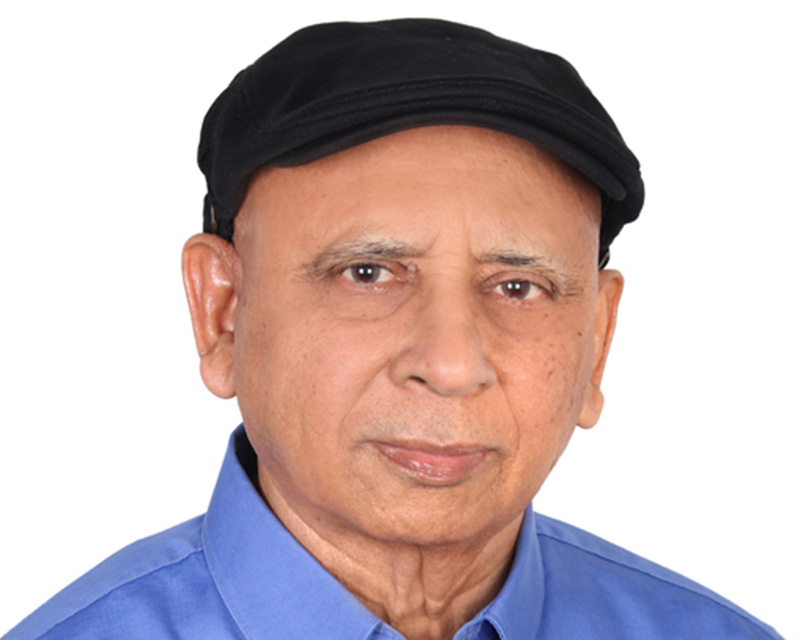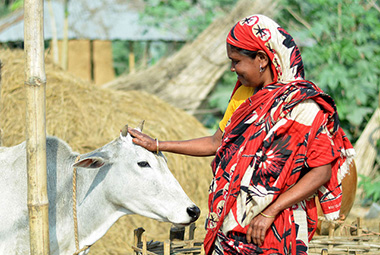The following blog by IFPRI gender experts Sophie Theis, Agnes Quisumbing, and Ruth Meinzen-Dick is the final in a four-part series leading up to the Policy Seminar on “Beijing +20 and Beyond: How Gender Research Is Changing the Landscape of Food Policy,” to be held on October 14, 2015 at IFPRI’s Washington, DC headquarters.
To commemorate Beijing+20, we are taking stock of research at IFPRI over the past 20 years that contributed to advancing gender equality by generating evidence from action, and compelling action from the evidence produced.
This blogpost, the final in a four-part series on IFPRI gender research in the past 20 years, shares key takeaways from research on themes of:
- Decision making 2.0
- Women’s empowerment
- Improving data on gender
Most of the articles shared in this series are published in peer-reviewed journals, but the hyperlinks provided go to the open access versions of the publications, except where noted with an asterisk. The full list of annotated publications (PDF 94K) will be updated to include new highlights going forward.
We hope to see you at the IFPRI policy seminar celebrating Beijing+20 on October 14th!
Decision making, revisited:
- Despite wide use of women’s decision making indicators, little has been done to explore what such indicators capture and how effective they measure program impacts on empowerment. There are large variations in how women are ranked in terms of decision making depending on how indicators are constructed; indicators are not consistently associated with other proxy measures of women’s empowerment or household welfare; and mixed evidence related to the impact of programs on women’s decision making indicators (Peterman et al 2015).
- Brazil’s Bolsa Familia conditional cash transfer has significant impacts on women’s decision making – and considerable heterogeneity in effects between rural and urban households and different domains of decision-making (de Brauw et al 2014).
- The importance of joint decision making is illustrated by a study of the adoption of biofortified oranges sweet potato in Uganda: adoption was higher on plots that were jointly owned, but where the woman was the primary decisionmaker on what to grow (Gilligan et al. 2013).
- The intrahousehold literature has shown that households are not unitary, but households do face many collective action situations, with members working together to produce livelihoods and allocate goods. Doss and Meinzen-Dick (2015) draw on the literature on collective action in natural resource management to identify factors that encourage cooperation that can be applied to household cooperation as well.
Women’s Empowerment:
- Though women’s empowerment is considered a key pathway for alleviating poverty, dimensions of women’s empowerment are often not rigorously measured. A paper by van den Bold, Quisumbing, & Gillespie 2013) reviews definitions and indicators of women’s empowerment used in the literature, and presents evidence of impacts of three types of interventions – cash transfers, agricultural interventions, and microfinance – on women’s empowerment, nutrition, or both.
- The Women’s Empowerment in Agriculture (WEAI) is the first comprehensive and standardized survey-based index designed to measure the empowerment, agency, and inclusion of women in the agricultural sector. An overview of the WEAI methodology and development, as well as pilot findings from three countries, are given by Alkire et al. (2012).
- An analysis of Women’s Empowerment in Agriculture (WEAI) scores from thirteen USAID Feed the Future countries finds that the three greatest constraints to women’s empowerment are lack of access to credit, heavy workloads, and low levels of group membership. Women’s empowerment scores are also found to be strongly associated with household educational achievement, income, and maternal behavior (Malapit et al 2014).
- Investigating the linkages between women’s empowerment and the nutritional status of women and children in Ghana, Malapit and Quisumbing (2014) find that improved nutritional status is not necessarily correlated with being empowered in all the domains of empowerment and that different domains may have different impacts on nutrition.
- A paper using household survey data from Nepal (Malapit et al. 2013) investigates the impact of women’s empowerment in agriculture and production diversity on dietary diversity and anthropometric outcomes of mothers and children. Women’s empowerment mitigates the negative effect of low production diversity on maternal and child dietary diversity and height-for-age z-scores, indicating that women’s empowerment has greater potential to improve nutrition outcomes in households with less diverse production.
- Sraboni et al. (2013) examine the relationship between women’s empowerment in agriculture and two measures of household food security. It finds that overall WEAI score, the number of groups in which women actively participate, women’s control of assets, and a narrowing gap in empowerment between men and women within households are positively associated with calorie availability and dietary diversity.
Improving Gender Data
- IFPRI’s research over the years has made great strides to improve the quality of data on gender. Part of this has come from collecting survey data from both women and men within the household, such as through the Women’s Empowerment in Agriculture (WEAI). This has now led to the development of many databases with sex-disaggregated data, such as the nationally-representative Bangladesh Integrated Household Survey (BIHS) 2011-2012, or the longitudinal Ethiopian Rural Household Surveys (ERHS), the Bukidnon Panel Survey, and the Bangladesh Chronic Poverty and Long-term Impact Dataset.
- Doss and Kieran (2014) set out some simple and achievable steps for collecting relevant sex-disaggregated data for agricultural research, including baseline understanding, identification of constraints, opportunities, and responses to risky environments, as well as assessing impact of agricultural programs.
- Other contributions have been through integration of qualitative and quantitative methods. The Gender, Agriculture and Assets Project (GAAP) toolkit contains materials to help researchers and practitioners use mixed methods to collect and analyze gender and assets data, and Bryan et al. (2014) provide a research guide for gender-disaggregated analysis of climate change impacts and adaptation.
- However, there is still a need for better sex-disaggregated data, especially at national level. Results of interviews with African gender and health experts determined that there is a need for more gender data related to economic empowerment, knowledge of legal rights and recourse, participation in decision making, attitudes and social norms, and adolescent girls (Heckert & Fabic 2013*). Stay tuned for more contributions to address this and other critical gaps in the evidence.







